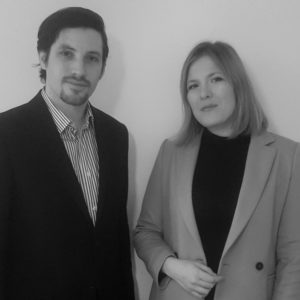

Sébastien Lachaussée & Elisa Martin-Winkel
Script counterfeiting criterias under French Law
On September 2, 2014 Michel Hazanavicius and Thomas Langmann’s production firm, La Petite Reine, were brought before the Paris Regional Court for scenario counterfeiting with their movie « The Artist ». The charge is laid by Christophe Valdenaire, author of two short-films, who wrote between 1998 and 2009 a feature film scenario called « Timidity, the little man’s symphony ». Considered as a mute project, paying tribute to cinema and to the transition from silent films to talkies pictures, the film was intended to be a black-and-white movie and its fundraising process would date back to 13 years. This kind of conflict is common in the film industry and it is up to the judges to distinguish what is, and had to stay, « free to be used » from what constitutes « the imprint of the author’s personality » and to analyse similarities between the two texts.
Indeed, from a legal perspective, scenario counterfeiting is essentially a matter of evidence, and what could be more difficult, in artistic circles where co-writing are usual, than defining very precisely who wrote what and when ? Let’s first point out that according to article L 113-7 of the French Intellectual Property Code, the author of a scenario is presumed to be a movie co-author and, because of this, will benefit from intellectual property right protection affiliated to the movie. Furthermore case law repeat, since the Paris Regional Court decision of 4 April 1978, that « a scenario itself can be protected regardless of its final use in an audio-visual work ». However every audio-visual idea is not a protectible scenario, which is more a processing ideas. So to be protectible a scenario doesn’t have to be think as an audiovisual creation, it’s just have to be original. This is often where the shoe pinches because, fortunately, the main theme of a movie isn’t appropriable because it isn’t original. For example, in granting a summary judgment, the Paris Regional Court decision of 12 June 2006 denied the request of a Middle East expert screen writer, who accused the movie « Syriana », produced and played on screen by Georges Clooney, to counterfeit her scenario. The court considered that Middle East conflicts and its usual motivations, such as oil industry, islamism, influence of the United States or CIA’s failures are major topical issues and one of the foremost concerns of the western society since attacks on the World Trade Center. Therefore, such thematic must not be unduly appropriated. This principle is fulfilled since a long-time by case law and the Paris Regional Court stated, in a decision of 8 April 1998, that Copyright protection doesn’t cover the main theme « which still belong to ideas area and is, by nature, inappropriable ». Indeed it would be unfortunate that anybody could be blamed for counterfeiting elements which fall into a « joint fund » of potential topics. But everything is a supreme discretion of the judge question and he doesn’t hesitate to make use of experts, as it deems necessary. Before considering similarities between the two texts, and not the opposite in the name of a fundamental principal of literary and artistic property, judges consider facts surrounding each creation by using a body of evidence. Therefore, in order to determine whether the infringing work is original, jugdes are beginning by a prior art search work. Then they look for chronological and geographic elements which are connecting ou separating works creation. Finally they value similarities only.
This is the approach used by the Paris Regional Court in the Claude Zidi’s movie case, « La Totale », and his remake « True Lies », in a decision of 1st June 2011. Indeed a screenwriter wrote in 1981 a scenario named « Emilie » tracing the history of a man posing as a spy in order to seduce a woman. The screenwriter also tasked an artistic agency with the responsaibility of getting him audition at film production companies. At first the Court rejected the screenwriter request on the grounds that similarities between these scenarios were, in fact, a series of current life situations or of attached elements that were imposed by the nature of the topic. Indeed there is nothing wrong with the representation of someone shadowing someone else in a spy movie or with a husband jealousy crisis in a comedy of manners. But the movie precisely merged these two types of movies and starting from general themes, it’s by the way it deals with subjects that it became original. These characters and adventures were also « essential and characteristic elements » of the movie that we were finding in both movies, but that the judge nevertheless decides not to legally qualify. The counterfeit were also recognize on appeal because the removal of these elements, consider as « the motor force of the story », would have resulted in the loss of the reason why it exist.
The counterfeiting of a scenario by a movie is also possible but only if similarities are common to scenarios, overall structures (see, to that effect « Leon » case : Paris Court of Appeal, 27 june 2001, Franck Gerardi c/ Luc Besson) and to elements which, in addition to characters, are essential and characteristic, that is to say « the motor force of the story » or « the reason why it exist » which are, still according to « Leon case », the storylines, the narrative mechanisms and the story‘s unexpected turns. But we have to be sceptical about every similarity because a single detail of a scenery, if it’s faithfully reproduced from another scenario, can convict an infringer (« Seraphine case » : Paris Regional Court, 26 november 2010.). To finish we should point out that a created work is protected as soon as it exists, not from the date on which it is publicly disclosed. Therefore it is up to the counterfeiter to prove that he was unable to access the counterfeit story or that similarities between both works result from « fortunate encounter » or from « reminiscences originate from common inspiration ». (First Civil Chamber of the Court of Cassation, 2 october 2013, n°12-25941).
SHARE THIS ARTICLE
CONTACT
OUR OFFICES
INFORMATION
sl@avocatl.com
PHONE
+33.1.83.92.11.67
Address
121, boulevard de Sebastopol
75002 Paris
5th floor / Staircase A
Follow us :
Newsletter
Please enter your e-mail :
